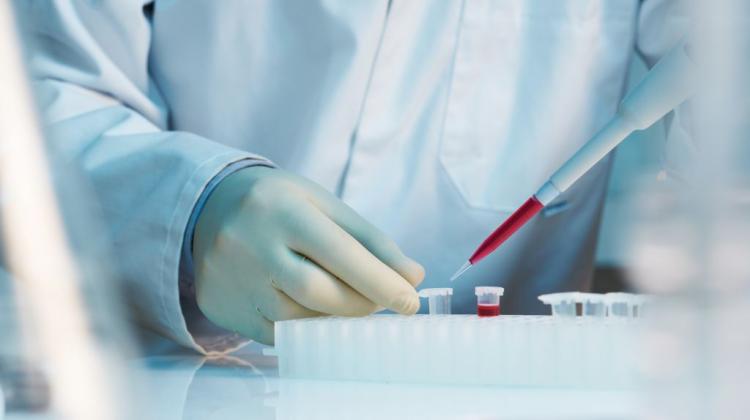Polish researchers: We have developed effective treatment for multiple sclerosis
 Photo: Fotolia
Photo: Fotolia
Polish scientists have developed bone marrow cell therapy with the use of patient`s own cells for the treatment of multiple sclerosis (MS). The technology owned by Luna Laboratory was announced at a press meeting in Warsaw.
Neurologist Prof. Andrzej Klimek, one of the leading researchers involved in the development of this method, explains that it involves a single administration of stem cells taken from the patient`s own bone marrow. These are not hematopoietic cells, i.e. stem cells for blood cells and the immune system.
So far, the method has been used to treat four patients with advanced disease - from moderate to severe motor impairment, vision disorders, sphincter dysfunctions, limited work ability and limited independent long-distance mobility.
"After single administration of cells, we observed the patients for two years, with an additional observation after three years. It turned out that - in my opinion - the results were exceptionally good" - says the neurologist. He explains that 2-3 years after single administration of cells, all patients showed a significant improvement of the EDSS disability scale score. In one case the patient had an MS relapse, but it lasted only a short time. "And after this relapse there was a return to the previous neurological condition" - notes Prof. Klimek. According to the neurologist, the therapy has no side effects.
Brain tests of patients using magnetic resonance imaging (MRI) showed that the amount and volume of plaques (areas in the brain where the myelin sheath surrounding nerve fibres was damaged) significantly decreased after some time. "For us this is indirect evidence that these cells work" - says the neurologist.
In response to journalists` question how this method differs from other stem cell therapies used in the treatment of MS, the president of Luna Laboratory Wioletta Zdańska explained that the innovation lies in the fact that stem cells are not multiplied in the laboratory after being collected from the patient. "The second very important aspect is that we are able to very carefully select from the whole cocktail of the patient`s bone marrow cells (...) those stem cells and their proportions that we know will work on autoimmune disease, which is MS" - she explained.
The conference organizers noted that more precise explanation of the mechanism of the method could be given by its author, who could not attend the press meeting.
One of the patients who received a stem cell autograft is Maria Mańkowska, president of the Włocław MS Society. During the press meeting, she said that she was diagnosed with MS 18 years earlier. In addition, she suffers from another autoimmune disorder, rheumatoid arthritis (RA). She mentioned that she had to use crutches when she started the therapy. "I did not live my life, I had problems swallowing, walking, I lost sight for half a year. (...) And now I can take care of my grandchildren, my parents, I lead a completely different life, I work professionally, (...) I have become a certified therapist, today I feel alive. (...) I am able to drive a car, I ride a bicycle" - she said.
Zdańska announced that the company had a positive opinion of the European Medicines Agency concerning the possibility of administering stem cell therapy. It was authorized in the abbreviated procedure of the so-called hospital inclusion, which means that the company produces a drug for a specific patient. She emphasized that the results of hospital treatment tests are "more than promising". The company has applied for a decision of the Ministry of Health on conducting this therapy.
Multiple sclerosis (MS) is an inflammatory disease that damages the central nervous system (brain and spinal cord). It is an autoaggressive disease, in which the immune system attacks and destroys the body`s own tissues. In the case of MS, myelin is destroyed, a structure that forms an insulator surrounding nerve fibres. As a result of myelin damage, the nerve signals are disrupted and various neurological symptoms occur, including visual disorders, sensory disorders, hand numbness, dizziness and balance disorders, chronic fatigue. The disease can lead to disability, especially if left untreated or treated poorly.
Currently, pharmacotherapy is primarily used in the treatment of MS. It helps patients with the most common, relapsing-remitting form of the disease. Stem cell transplantation is still used as an experimental therapy in patients, in whom drugs do not work.
PAP - Science in Poland, Joanna Morga
jjj/ agt/ kap/
tr. RL
Przed dodaniem komentarza prosimy o zapoznanie z Regulaminem forum serwisu Nauka w Polsce.
















